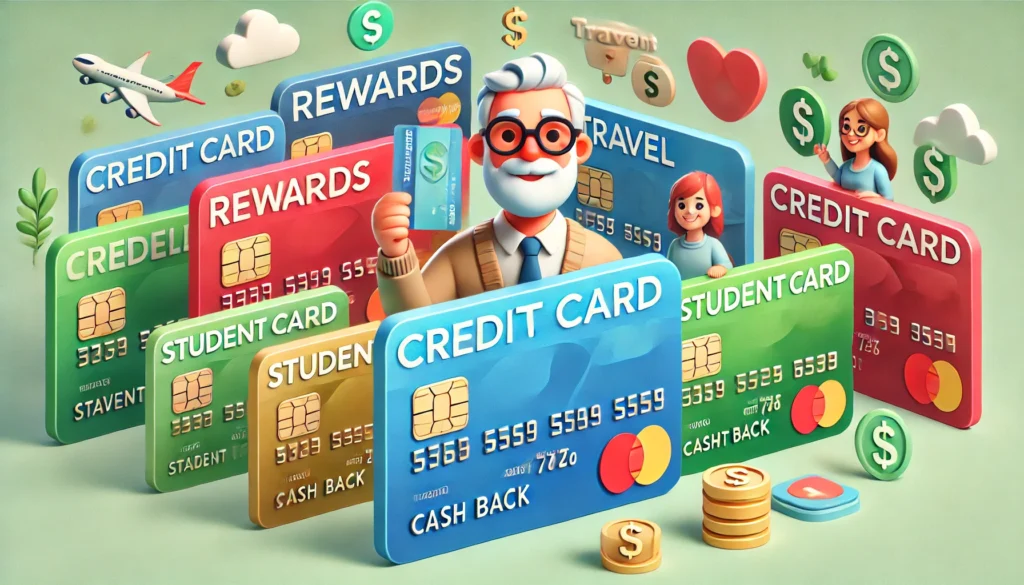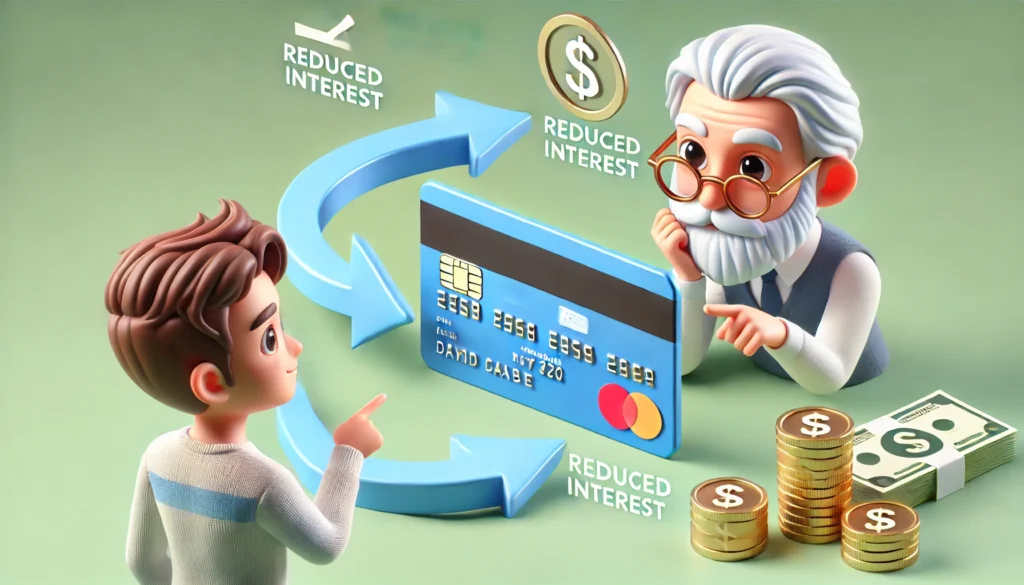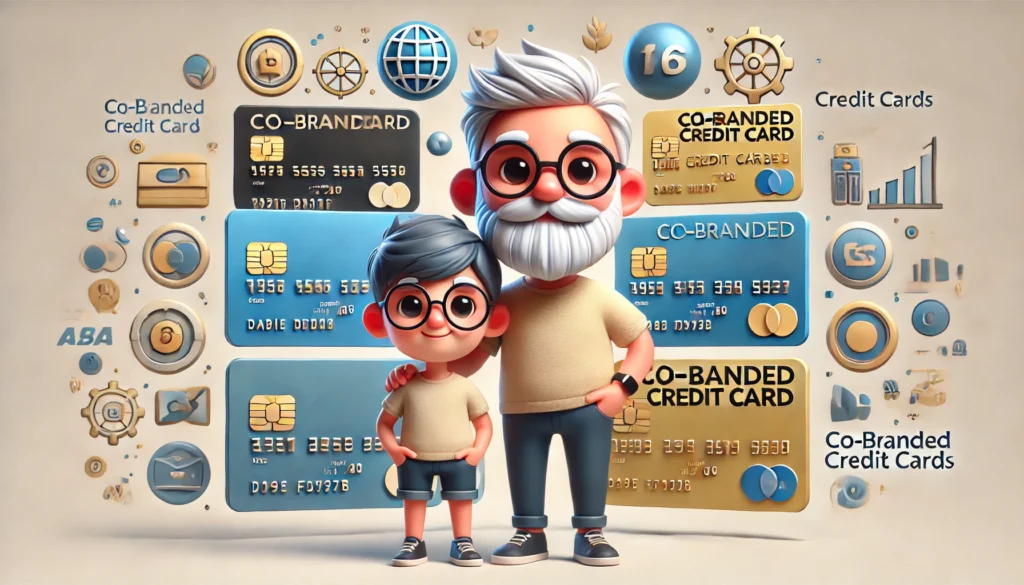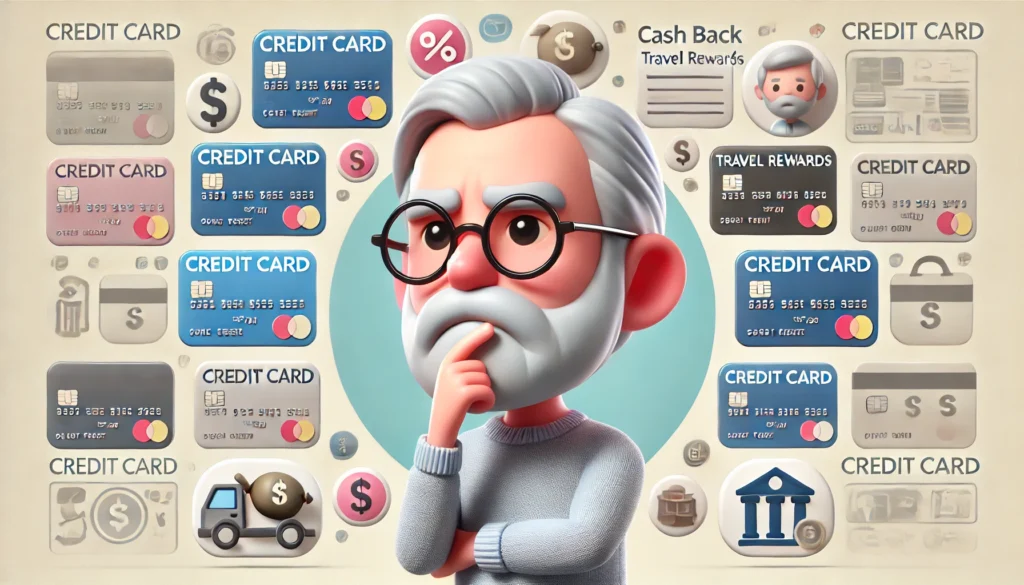Introduction
Choosing the right credit card can simplify spending, earn rewards, and help manage finances.
With a variety of options, from travel rewards to secured cards, understanding each type’s benefits can guide you toward the ideal choice.
This guide covers who each card suits best, its perks, and how to apply for different Types of Credit Cards
Table of Contents

| Credit Card Type | Best For | Key Benefits |
| Rewards Credit Card | Regular shoppers | Earn points, miles, or cash back; suitable for categories like groceries and travel; sign-up bonuses and APR offers |
| Travel Credit Card | Frequent travelers | Redeem points or miles for travel; perks like free checked bags, lounge access, and discounted airfare |
| Secured Credit Card | Credit building | Helps build/repair credit with a cash deposit; some upgrade to unsecured after responsible use |
| Student Credit Card | College students | Lower limits, fewer fees; may offer rewards on school-related spending |
| Balance Transfer Card | Debt management | Low or 0% APR for transferring balances; reduces interest costs on high-interest debts |
| Business Credit Card | Small business owners | Rewards for business purchases; helps separate personal and business expenses |
| Store Credit Card | Frequent store shoppers | In-store discounts and rewards; often has higher interest and may be restricted to specific stores |
| Cash Back Credit Card | Simple rewards | Straightforward cash back on eligible purchases, often in dining, groceries, or gas categories |
| Co-Branded Credit Card | Loyal brand users | Brand-specific perks; useful for frequent users of partner airlines, hotels, or retail brands |
| Low-Interest Card | Managing carried balances | Reduces interest costs with low APR; suitable for those who carry balances |
Types of Credit Cards and Their Benefits
1. Rewards Credit Cards

Rewards cards allow users to earn points, miles, or cash back on purchases, often rewarding specific spending categories.
- Who It’s For:
Ideal for those who make regular purchases in specific categories like groceries or travel. - Best For:
Maximizing value through everyday spending on categories that earn rewards. Cash back can also be redeemed towards reducing your credit card balance, providing an additional financial benefit. - How to Apply:
Applications are typically online through the issuing bank’s website. Ensure a good credit score for the best rewards programs.
Did you know?
Many rewards cards offer additional perks, like sign-up bonuses or introductory APR offers, that make them especially valuable early on.
Earning Rewards

Earning rewards on your credit card purchases can be a fantastic way to get something back for your spending.
Rewards credit cards offer various ways to earn rewards, including cash back, points, and miles.
Cash back credit cards provide a percentage of your purchase back as a reward, while points and miles can be redeemed for travel, gift cards, or other valuable rewards.
To maximize your rewards earnings, consider the following tips:
- Choose a rewards credit card that aligns with your spending habits:
If you spend a lot on groceries, for example, look for a card that offers bonus rewards in that category. - Use your credit card for all of your purchases:
Including small transactions like coffee or gas can add up over time. - Take advantage of sign-up bonuses and introductory offers:
These can help you earn a large number of rewards points or miles upfront. - Consider using a credit card with rotating rewards categories:
These cards can offer higher rewards earnings in different categories throughout the year.
By following these tips, you can earn a significant number of rewards points or miles and redeem them for valuable rewards, making your everyday spending more rewarding.
2. Travel Credit Cards

Travel rewards credit cards are designed for those who frequently book flights, hotels, and other travel expenses.
They offer points or miles redeemable for travel purchases.
- Who It’s For:
Frequent travelers looking to earn points or miles on travel-related purchases. - Best For:
Those who want perks like free checked bags, airport lounge access, or discounted airfare. - How to Apply:
Apply online through major card issuers. Good to excellent credit scores increase approval odds for premium travel perks.
3. Secured Credit Cards
Secured cards help individuals build or repair credit by requiring a cash deposit as collateral, which determines the credit limit.
- Who It’s For:
People with limited or poor credit history aiming to build credit responsibly. - Best For:
Establishing or rebuilding credit with minimal risk due to low credit limits. - How to Apply:
Applications are online, often requiring proof of identity and the cash deposit amount. After responsible use, some issuers may upgrade the account to an unsecured card.
4. Student Credit Cards

Student credit card options cater to college students with lower credit limits, fewer fees, and sometimes rewards on school-related spending.
- Who It’s For:
College students looking to start building a credit history responsibly. - Best For:
Young adults interested in rewards and benefits like cash back on books, dining, or entertainment. - How to Apply:
Applications may require proof of enrollment and, in some cases, a co-signer if the applicant lacks credit history.
5. Balance Transfer Credit Cards

Balance transfer cards allow users to transfer balances from high-interest cards, often offering low or 0% APR during an introductory period.
- Who It’s For:
Those with high-interest credit card debt aiming to save on interest. - Best For:
Paying off debt efficiently with minimized interest. - How to Apply:
Apply online, providing information on the current card balances for transfer. Be prepared for a small transfer fee that applies in some cases.
6. Business Credit Cards

Business credit cards are tailored for small business expenses, offering rewards on purchases specific to business needs like office supplies, utilities, and travel.
- Who It’s For:
Small business owners or freelancers who want to separate personal and business expenses. - Best For:
Earning rewards on business-related expenses and tracking business purchases. - How to Apply:
Applications are typically through the issuer’s website, and applicants may need to provide business financial information and a tax ID number.
7. Store Credit Cards

Offered by retail stores, these cards reward in-store purchases with discounts or loyalty rewards. However, they tend to have higher interest rates.
- Who It’s For:
Frequent shoppers at a specific retail store looking to earn discounts and rewards. - Best For:
Those who shop regularly at the issuing store and want exclusive offers. - How to Apply:
Apply directly at the store or online. Approval often requires a fair credit score, though requirements vary.
Fact:
Many store cards are “closed-loop,” meaning they can only be used at the issuing store, unlike traditional credit cards.
8. Cash Back Credit Cards
Cash back cards offer straightforward rewards by giving a percentage back on eligible purchases.
For those looking to stretch their cash-back rewards further, here are clever ways to save money that can amplify your rewards
- Who It’s For:
Shoppers who want a simple way to earn rewards without dealing with points or miles. - Best For:
Everyday purchases, especially in categories like dining, groceries, or gas. - How to Apply:
Applications are online or at the bank. A good credit score increases approval chances for high-value cash-back cards.
9. Co-Branded Credit Cards

These cards, created in partnership with a brand (such as an airline or hotel), offer rewards and perks specific to that brand.
- Who It’s For:
Loyal customers of a brand who want enhanced benefits when using their card for brand purchases. - Best For:
Travelers or shoppers who regularly spend at a specific airline, hotel, or retail brand. - How to Apply:
Apply through the bank or brand’s website. Many co-branded cards offer sign-up bonuses, which can enhance initial benefits.
10. Low-Interest Credit Cards
Low-interest cards provide lower APRs compared to other cards, reducing interest costs for cardholders who carry balances.
- Who It’s For:
Those who expect to carry a balance and want to minimize interest charges. - Best For:
Avoiding high-interest charges on monthly balances. - How to Apply:
Apply online with a focus on the card’s APR terms and fees. Approval requires a fair to good credit score.
Managing Debt and Building Credit
Managing debt and building credit are crucial aspects of using credit cards responsibly. Here are some tips for managing debt and building credit effectively:
- Make on-time payments:
Paying your credit card bill on time is essential for building credit and avoiding late fees and interest charges. - Keep your credit utilization ratio low:
Try to keep your credit utilization ratio, which is the amount of credit you’re using compared to the amount of credit available to you, as low as possible. Aim to use less than 30% of your available credit to show lenders you can manage your debt responsibly. - Don’t open too many credit accounts:
Opening too many credit accounts can negatively affect your credit score, so only apply for credit when necessary. - Monitor your credit report:
Check your credit report regularly to ensure it’s accurate and up-to-date.
To fully manage your finances and debt efficiently, tools like those offered by StockDaddy provide resources to keep track of your credit health and spending habits
By following these tips, you can manage your debt effectively and build a strong credit history, which will benefit you in the long run.
Choosing the Right Credit Card

Choosing the right credit card can be overwhelming, but by considering your needs and financial goals, you can find a card that’s right for you. Here are some factors to consider when choosing a credit card:
- Interest rate:
If you plan to carry a balance, look for a card with a low interest rate. If you pay your balance in full each month, you may not need to worry as much about the interest rate. - Fees:
Consider the fees associated with the card, including annual fees, late fees, and foreign transaction fees. - Rewards:
If you want to earn rewards, consider a card that offers cash back, points, or miles. - Credit limit:
Make sure the credit limit is high enough to cover your expenses, but not so high that you’re tempted to overspend.
By considering these factors, you can find a credit card that meets your needs and helps you achieve your financial goals.
For a deeper dive into personal finance strategies, our list of recommended finance books provides invaluable insights.
How to Choose the Best Credit Card for You
Choosing the best credit card for you requires some research and consideration of your financial goals and spending habits.
Here are some steps to follow:
- Determine your financial goals:
Are you looking to earn rewards, build credit, or pay off debt? Different credit cards are designed for different purposes, so it’s essential to choose a card that aligns with your goals. - Consider your spending habits: Think about how you plan to use the credit card. If you spend a lot on groceries, for example, look for a card that offers bonus rewards in that category.
- Research different credit cards: Look at the features and benefits of different credit cards, including interest rates, fees, rewards, and credit limits.
- Read reviews and compare offers: Check out reviews from other cardholders and compare the offers from different credit card issuers.
- Apply for the card:
Once you’ve chosen a credit card, apply for it online or in-person.
By following these steps, you can find a credit card that meets your needs and helps you achieve your financial goals.
Key Takeaways
- Rewards Credit Cards:
Great for maximizing rewards on everyday purchases. - Travel Credit Cards:
Best for frequent travelers seeking travel-related perks. - Secured Credit Cards:
Ideal for building or repairing credit. - Student Credit Cards:
Valuable for young adults starting their credit journey. - Balance Transfer Credit Cards:
Useful for managing high-interest debt. - Business Credit Cards:
Tailored for tracking business expenses and earning rewards on business-related purchases. - Store Credit Cards:
Good for frequent shoppers seeking in-store discounts. - Cash Back Credit Cards:
Offers straightforward rewards on everyday purchases. - Co-Branded Credit Cards:
Perfect for brand-loyal customers wanting added perks. - Low-Interest Credit Cards:
Suitable for those needing a low APR for carried balances.
Conclusion
Choosing the right credit card involves matching your financial goals to the card’s unique benefits.
From rewards and travel perks to credit-building and low-interest options, understanding these credit card types helps you select the best one for your needs.
FAQs
1. What is a travel rewards credit card, and who benefits most from it?
Travel rewards cards are designed for frequent travelers, offering points, miles, or travel-related perks like free checked bags and lounge access.
2. Are secured credit cards only for people with bad credit?
No, secured cards are useful for anyone looking to build credit, even those new to credit, as they require a cash deposit that determines the credit limit.
3. How do cash back credit cards work?
Cash back cards reward purchases with a percentage of cash back, often between 1%–5%, making them ideal for daily expenses.
4. What is a balance transfer credit card, and how does it help with debt?
Balance transfer cards offer low or 0% APR on transferred balances for a period, reducing interest on existing credit card debt.

